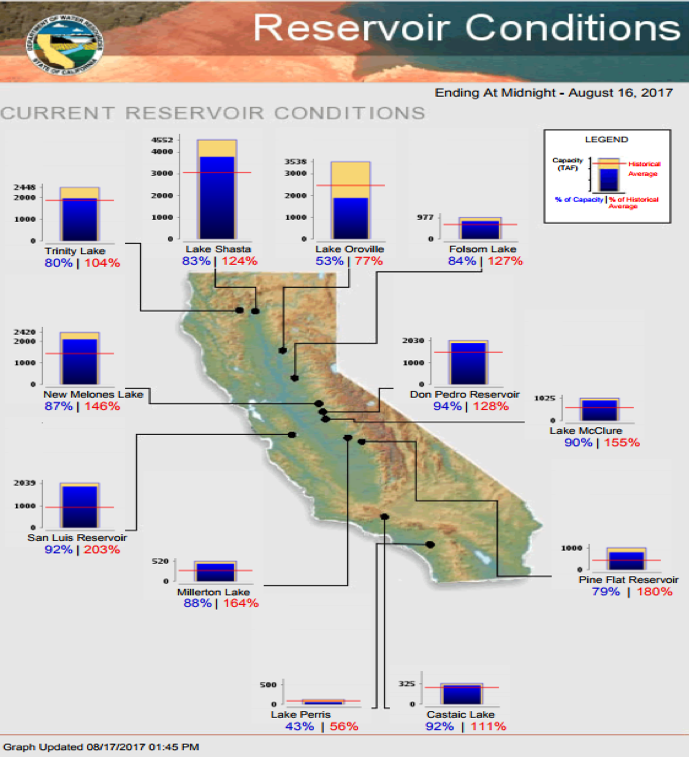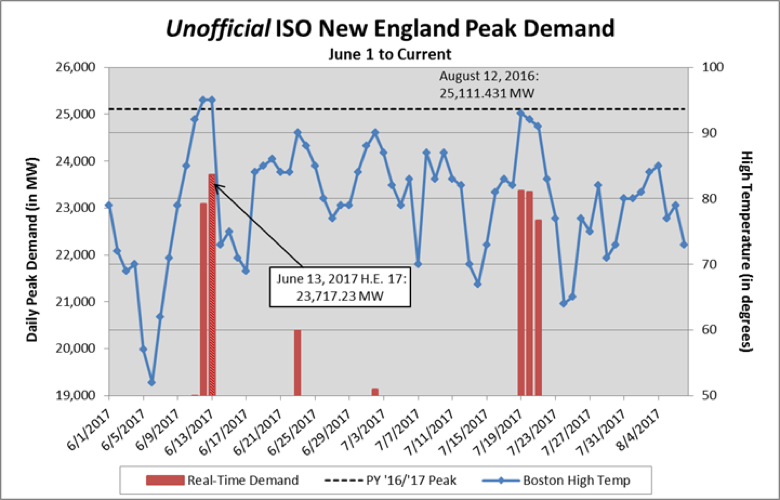August Webinar Q&A
4 min readOur August 2017 Energy Market Outlook Webinar featured a new, shortened 30 minute format. The goal of this new format is to keep our customers, channel partners, and attendees informed of market changes. During those 30 minutes, our energy experts discussed summer updates, short-term market fundamentals, and key summer price drivers.
In addition to our energy experts providing their insight into the market, Constellation Technology Ventures (CTV) also spoke. CTV is the venture investing organization within Exelon that drives innovation. They invest in venture-stage disruptive energy technology, seek technology development and deployment venues for these investments and strive to deliver the latest-and-greatest solutions to our customers. Visit Constellation.com/CTV to find out more about Constellation Technology Ventures.
We received a few questions from attendees. Please check out the answers below to see insight into the questions attendees had:
- Is there a reason why more Marcellus gas is not flowing up into the NY, MA, CT region?The basic answer is that pipeline capacity and a lack of new capacity limits flows in winter months when operational capacity levels are high. The most recent expansion of existing capacity was the Algonquin Incremental Market (AIM) which was completed in 2016, adding 342 MMcf/d of capacity. This project has been in opposition to new pipelines such as the Constitution pipeline (running from Scranton PA to just south of Albany NY where TN & Iroquois pipelines intersect) that have limited new capacity into New England.

Source: RBN Energy
- Why did the hydro-power in California make the shift from record high levels to near record low levels this year?The hydro season peaked this summer in the July time frame as strong above normal temperatures accelerated remaining snowpack except at the highest elevations. This resulted in hydro generation levels that exceeded the previous record levels set in 2011 and hydro generation levels declined in late July thru August. As the below graph of reservoir level conditions illustrate, most of the state reservoirs with the exception of Lave Oroville are well above normal. Barring a return to strong above normal temperatures in late August, generation levels are not likely expected to increase significantly for the remainder of 2017.Also, see publically available generation YTD for CA from EIA. While data is only available thru April, we are on track for a record year and generation traditionally fades as we progress thru the summer.


Source: NOAA
- Do you anticipate an ISONE consumption peak in the coming weeks to surpass the mid-June peak?
According to the forecast outlook, this seems doubtful. The near-term 7 day forecast has Tuesday, August 29th as a potential high, but that will only get up to 89 degrees. The unofficial summer forecast from June 13 Hour Ending 17 was registered from a 95 degree day. The 8-14 day forecast looks to be normal for New England. Overall, even though the leading hour has a relatively low demand reading, it could be tough to surpass for the balance for August.

Source: Constellation
- Beyond Lithium Ion, what improved battery storage technologies are you seeing?
In terms of battery storage, there is an array of different battery chemistries available for the cathode/anode and electrolytic medium. Lithium ion is still the dominant choice in the market today, which is likely to be the case for the near term. The industry is consistently focused on manufacturing efficiency, cost, and scale. Improvements to battery technology are in the areas of achieving higher energy density, stability, and safety relative to lithium ion.There are interesting developments in the battery technology space worth noting. The technological development of the solid state batteries is progressing, which has a potential for a higher energy density and improved safety. Instead of liquid electrolytic medium, it can be metal, polymer, silicon, even materials such as glass. Certain car manufacturers have recently discussed solid state batteries as being incorporated into EVs in the early 2020s. Additionally, there are some promising advances in metal-air batteries that have the potential for also overcoming some of the issues with lithium ion. Some of the known metal-air compositions include aluminum-air, lithium-air, and zinc-air. Flow batteries, a well-known battery configuration, have made some recent developments in efficiency and cost with the ability of achieving longer discharge times and life spans. Flow batteries are likely used for utility applications and are still working to gain commercial acceptance. As this is only a fraction of the developments in the battery storage space, we continue to keep a focus on this rapidly evolving technology.Reserve your spot for our next Energy Market Outlook Webinar on October 18, 2017. Don’t miss out on our special edition webinar to look at what Winter 2017/2018 could bring on September 20, 2017.

